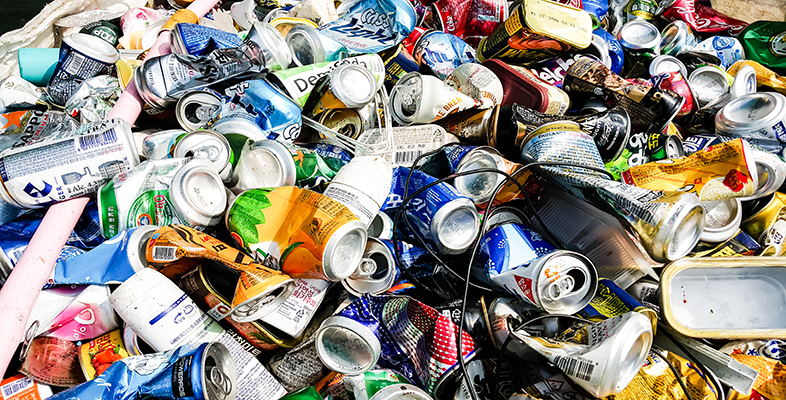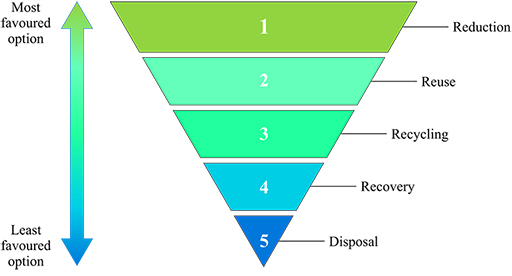1.2 Improving the treatment of MSW
Waste management systems have an overarching principle to protect public health. They rely on various strategies to minimise waste, to make best use of any waste that has a value, and to minimise any risk of pollution from waste management practices. The waste hierarchy lists the different ways of dealing with wastes according to what is best for the environment, starting with the most beneficial and working down to ‘disposal’, which is the least desirable way of getting rid of most wastes. Many versions of the hierarchy have been published, but they all present this same message. An example of the hierarchy is in Box 2.
Box 2 The waste hierarchy
Reduction: at the top of the hierarchy is waste reduction. This is the best option because the most effective way to limit the health effects and environmental impacts of waste is not to create waste in the first place.
Reuse: reuse can be defined as using a waste product without further transformation and without changing its shape or original nature. This is the second option in the waste hierarchy. Different types of solid wastes can be reused or used for a purpose similar to that originally intended, such as ‘upcycling’ clothes.
Recycling: this means that the waste material is reprocessed before being used to make new products.
Recovery: this is about finding other uses for wastes that enable some value to be extracted or recovered from them, usually by using them as a source of energy. Composting, the process where biodegradable organic wastes (food and garden waste) are converted into soil-like material (compost) in a natural biological process, is included within the recovery category.
Disposal: waste disposal processes aim to isolate the waste from people and the environment in a manner that causes no harm. This is most commonly done by using a tightly controlled and regulated landfill site, though very high temperature thermal processing may be used for hazardous waste.
The waste hierarchy has been developed to consider the environmental benefits of various types of waste treatment. It does not say anything about the cost of different options or how easy it may be to employ the best options of a particular kind of waste.
Waste reduction clearly helps in two key ways. First, the greenhouse gases associated with making products (materials, manufacturing and then distribution) are avoided, and second, society benefits by not having to dispose of or manage the waste that the products would have generated. However, the simple categories outlined in Box 2 are subject to debate and can be interdependent. For example, composting often needs added extra heat to speed up the process to create useful products more quickly. Similarly, if waste is incinerated with energy recovery, so that the energy recovered can be used for district heating schemes or fed into the electricity grid, then some form of disposal for the ash generated is needed. This is commonly disposed of in a very highly controlled landfill site.

